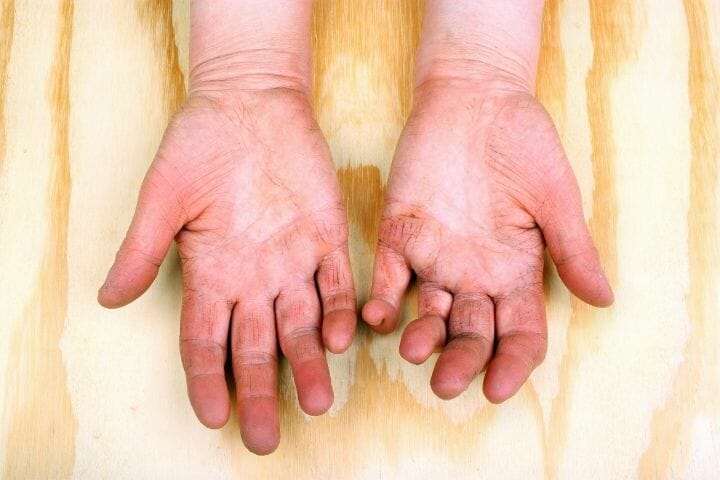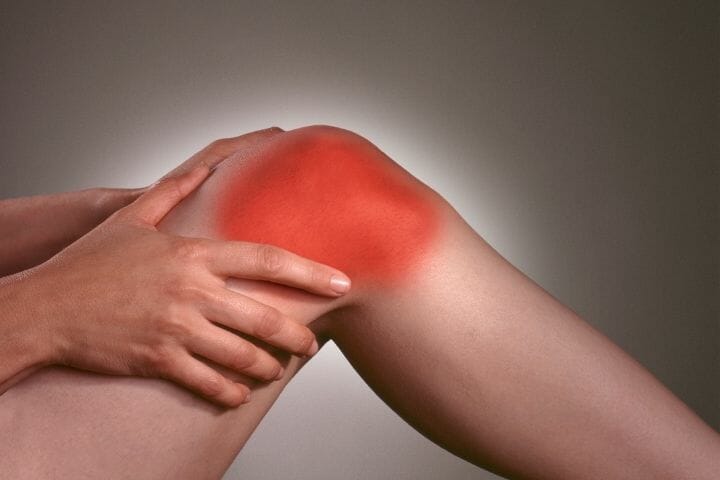Juvenile Arthritis is one of the most common yet least talked about chronic childhood disorders. Let us discuss some juvenile arthritis statistics to open your eyes to this silent pandemic in our children.
When we hear the word Arthritis, many of us usually think it is a joint-pain-related disease in older adults. But did you know that Arthritis can affect children below 16 years?
Arthritis in children is known as juvenile Arthritis. The most common form of childhood arthritis is Juvenile idiopathic Arthritis, which affects 294,000 children in the United States!

Juvenile Arthritis involves chronic joint inflammation in one or many joints in children’s bodies and may last for more than six weeks. Additionally, children can have symptoms like fever, rash, swelling, loss of appetite, fatigue, and difficulty doing daily activities like walking, playing, and dressing.
The exact cause of this disease is not known till now. But it is estimated that the disease impacts those children below 16 years of age whose immune system has not adequately developed.
This disease causes severe inflammation in their joints. It is diagnosed through X-rays and lab tests, but unfortunately, there is no cure for juvenile Arthritis. Any damage to the joint remains permanent and will impact the child for the rest of their life.
This article discusses juvenile arthritis statistics in detail. So you can continue reading the whole article for more information.
Contents
Types Of Juvenile Idiopathic Arthritis
#1. Systematic Juvenile Idiopathic Arthritis
It affects nearly 10 percent of children with Arthritis. Systematic Arthritis begins with repeated fever, which can go above 103 degrees Fahrenheit (39 degrees Celsius). Salmon-colored rashes often come and go in patients with systematic Arthritis.
Arthritis persists in children after fever and other symptoms disappear. Individuals with systematic Arthritis have skin rash or enlargement of lymph nodes.

#2. Oligoarticular Juvenile Idiopathic Arthritis
Oligoarticular Juvenile Arthritis affects nearly half of the children with juvenile Arthritis. Girls are at a higher risk of developing oligoarticular Arthritis than boys.
Children usually develop this disease before seven years of age and are at increased risk of developing inflammation in the eyes. Oligoarthritis is often marked by Arthritis in four or fewer joints in children in the first six months of the disease.
This disease can mainly be of two types. If Arthritis affects four or fewer joints in children after six months of diagnosis, it is known as persistent oligoarthritis. But if it affects more than four joints in children after six months, it is known as extended oligoarthritis.
#3. Poligoarticular Juvenile Arthritis
Poligoarticular Juvenile Arthritis affects five or more joints in children and can occur at any age.
#4. Psoriatic Arthritis
Psoriatic Arthritis occurs in conjunction with a skin disorder called psoriasis. The patients usually have patches of red skin, which are covered by flaky white scales. Additionally, children can have abnormalities in fingers, nails, and eye problems.
#5. Enthesitis Arthritis
This Arthritis involves inflammation of ligaments and the spinal cord. The patients usually complain of back pain and stiffness.

Juvenile Idiopathic Arthritis In United States
- Approximately 294,000 children in the United States are affected by Juvenile arthritis.2
- Almost half of the children with juvenile Arthritis have oligoarticular Juvenile idiopathic Arthritis.2
- The incidence rate for Juvenile Arthritis ranges from 4-to 14 cases per 100,000 population in a year.3
- The prevalence of Juvenile Arthritis ranges from 1.6 to 86.1 cases per 100,000 population.3
- Juvenile idiopathic Arthritis is more common in Caucasian populations and less common in African American and Asian populations.5
- Juvenile idiopathic arthritis-associated uveitis can lead to permanent vision loss in children. Almost 10 to 25 percent of children in the United States develop uveitis during the first four years of arthritis diagnosis.5
You might like to read: 19 Best Food For Arthritis
Juvenile Idiopathic Arthritis By World wide
- Juvenile Arthritis has been identified all over the World, with an average prevalence rate of 1to2 to per 1000 children.5
- A study in Sweden found that the prevalence of Juvenile Arthritis is 85 cases per 100,000 population with an incidence rate of 11 cases per 100,000 population.1
- A study from Germany found that the prevalence rate of juvenile Arthritis is nearly 20 cases per 100,000 population with an incidence rate of 3.5 cases per 100,000 population.1
- The prevalence rate of Juvenile Arthritis in Norway is 148 cases per 100,000 population with an incidence rate of 22 cases per 100,000 population.1
- The prevalence rate of Juvenile Arthritis in Costa Rica is 31 cases per 1000,000 population.1
- The prevalence rate of Juvenile Arthritis in Japan is 0.83 cases per 100,000 population.1

Juvenile Idiopathic Arthritis By Mortality
A study done by the British Society For Paediatric And Adolescent Rheumatology stated an increase in mortality rates in children compared to the general population. They surveyed 693 patients with Juvenile idiopathic Arthritis, where 99 children out of 693 patients had a systematic disease subtype. All the patients were 11 years old and had juvenile Arthritis for almost four years:
- The standardized mortality ratio (SMR) in Juvenile arthritis patients was 7.3. The SMR for severe systematic Juvenile arthritis patients was 21.7, while for nonsystematic juvenile arthritis patients was just 3.9.4
- The mortality rate for females was higher than for males.4
Juvenile Idiopathic Arthritis By Gender
- Girls are more affected by Juvenile Idiopathic Arthritis compared to boys.5
- Girls with oligoarticular juvenile Arthritis outnumber boys in the ratio of 3:1.3
- The ratio of girls to boys with uveitis is in the ratio of 5-6.6:1.3
- The ratio of girls to boys with polyarticular juvenile Arthritis is in the ratio 2.8:1.3
- The systematic onset occurs in equal frequency in both boys and girls.3
- Boys are affected more compared to girls with enthesitis-related Arthritis. 3

Juvenile Idiopathic Arthritis By Economic Burden
- Between 2000 and 2009, the parents whose children had Juvenile Arthritis lost $4589.37 per year because of missed work. In contrast, the parents whose children did not have juvenile Arthritis lost only $2986.08 because of missed work on average.5
- Parents with juvenile idiopathic Arthritis were 2.78 times more likely to report work time loss than parents whose children did not have juvenile idiopathic Arthritis.5
- According to a 2015 study in Europe, there is a remarkable increase in health care costs of Juvenile arthritis patients due to extended hospital stay, wide use of biologics, and nonprofessional caregiver costs.5
You might like to read: Arthritis: The Ultimate Guide For Seniors And Caregivers
Juvenile Idiopathic Arthritis By Age
- Juvenile idiopathic Arthritis is mainly seen in children aged 1-3 years.6
- Polyarticular RF negative Juvenile idiopathic Arthritis first occurs in children ages 1-4 years, and the second peak occurs between 6-12 years.3
- Systematic Juvenile idiopathic Arthritis mainly occurs in the childhood period.3
- Enthesitis-related Arthritis occurs in children mainly between 10-12 years.3
School And Social Impact
- Children with Juvenile Idiopathic Arthritis spend a larger time in bed and spend less time in physical activities.5
- Only 23 percent of Juvenile arthritis patients meet public health guidelines on physical activity compared to 66 percent of healthy peers.5
- The children with Juvenile Idiopathic Arthritis have poor school life compared to children without Juvenile idiopathic Arthritis.5

Juvenile Idiopathic Arthritis By Incidence Of Uveitis
The incidence of Uveitis in Juvenile Idiopathic Arthritis varies all across the globe, and not much research has been done on this topic.
In a study done by considering Juvenile idiopathic arthritis patient’s cases from nordic countries including Denmark, Finland, Norway, and Sweden between January 1997 to June 2000, the following were some findings:
- Uveitis developed in 89 out of 435 children.7
- No uveitis was found in systemic and polyarticular RF categories.7
- The highest incidence of uveitis was seen in Juvenile Psoriatic Arthritis and enthesitis-related Arthritis.7
- The incidence of uveitis was higher in Finland than in other geographical areas. Finland had a high proportion of younger children suffering from Juvenile idiopathic Arthritis.7
A Few Final Words
Growing up with Arthritis is a huge challenge for children. Many studies have reported a higher incidence of depression in children with Juvenile Idiopathic Arthritis than children without this disease. The increased length of illness increases the psychiatric disorder in children.

However, the probability of attaining remission within five years of diagnosis is 50 percent, except for children with polyarthritis. I hope this article helped you understand the prevalence and impact of juvenile Arthritis and why it is important to help those who are suffering from this disease.
If you have any further questions related to this disease and other statistics, feel free to drop us a comment, and we will get back to you with answers as quickly as we can.
References.
- 1. Incidence and Prevalence of Juvenile Idiopathic Arthritis Among Children in a Managed Care Population, 1996–2009
- 2. Juvenile idiopathic arthritis: MedlinePlus Genetics
- 3. Juvenile Idiopathic Arthritis: Practice Essentials, Background, Etiology and Pathophysiology
- 4. 266. Standardized Mortality Rates are Increased in Patients with Severe Juvenile Idiopathic Arthritis | Rheumatology | Oxford Academic
- 5. Arthritis By The Numbers
- 6. STOP STREET HARASSMENT (qxmd.com)7. Incidence and predictors of Uveitis in juvenile idiopathic arthritis in a Nordic long-term cohort study | Pediatric Rheumatology | Full Text
